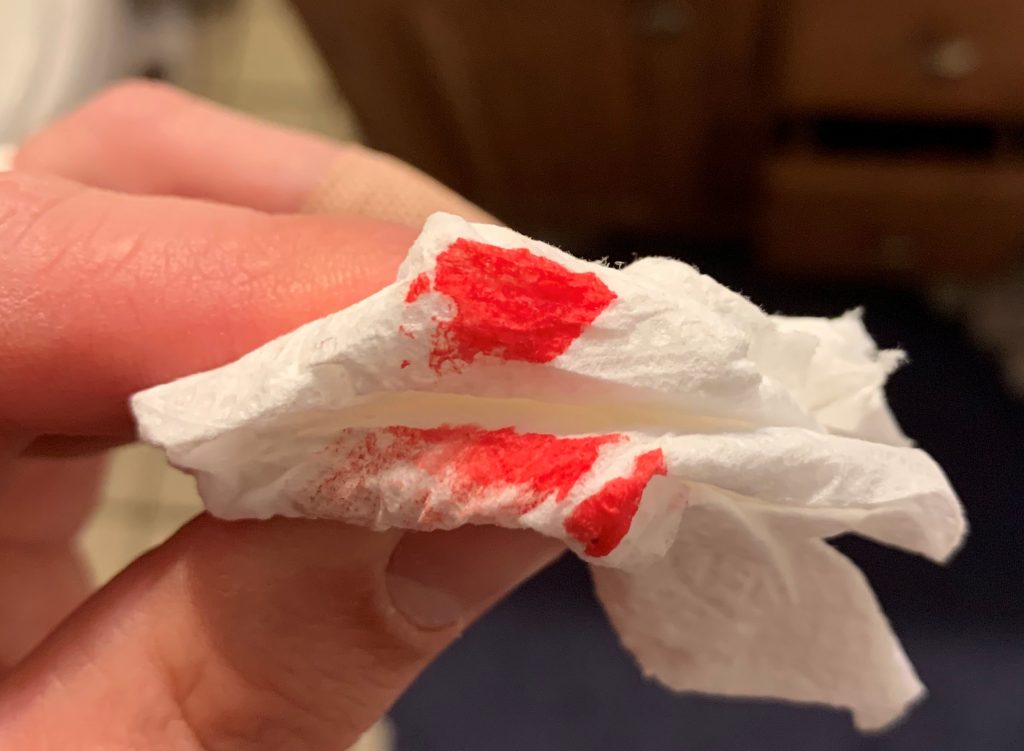Creating Blood Effects, Stage Combat Theory
What Color is “Realistic” Oxygenated Blood?
In the world of stage blood (and for the uninitiated yes there is absolutely a “world of stage blood”) manufacturers take great pains to get the bright red and dark red hues of oxygenated and deoxygenated blood, respectively, to look realistic.
But what does “realistic” even mean in this case?
Take a look at the image at the beginning of this article. That is a picture of real oxygenated blood dabbed onto a tissue from a fresh cut (and many thanks to our fearless leader, Greg Poljacik, for pricking his finger in the name of science).
That red is bright bright bright. Too bright. If you look at it for more than a few seconds it starts to look fake.
How backwards is that?
If we were going to make our bright red blood products look exactly like the freshest oxygenated blood the hue of our “bright red” color would be way brighter than it is, almost to the point of being hot pink.
We choose not to go that bright because the intense bright red blood color from fresh cuts doesn’t last long. In fact, matching the true color of freshly oxygenated blood can cause your blood effects to look fake.
The Science of Blood Hues
Immediately after being exposed to air, hemoglobin in blood will bind with oxygen and become very bright red. Very soon, however, as proteins break down and plasma is released, iron in the hemoglobin will start to turn a rusty color and darken the blood hue.
In other words, the color of real blood is not static, and because the super bright red of freshly oxygenated blood is fleeting, we choose a darker red, even for our “bright red” color. Though it may seem completely backwards, this actually makes more sense to audiences.
Based on the human perception of what is real and what is not, then, here’s what our “bright red” blood looks like on a piece of fabric:

What it Means for your Production
Deep down audiences understand that the pinkish color of fresh oxygenated blood doesn’t look quite right after a while and it will become distracting. Even though a majority of human experiences are with short exposure to fresh cuts, everyone has had longer exposure to blood and what it looks like. If the bright color remains visible for too long it will set off “BS detectors” in the minds of audience members.
Because the color of fresh blood starts off bright red and darkens over time, your choice of bright red or dark red needs to be based on what’s going on in the story and how long the blood effect will be visible.
For fresh wounds and effects that will only be visible for a short time consider using our bright red color.
For blood effects representing blood that has been there for a while already (pools of blood discovered in a room, for example) or effects that will be visible for extended periods of time, consider using our dark red color.
If you would like additional advice on how to create the most realistic blood effects for your production, please contact us!

